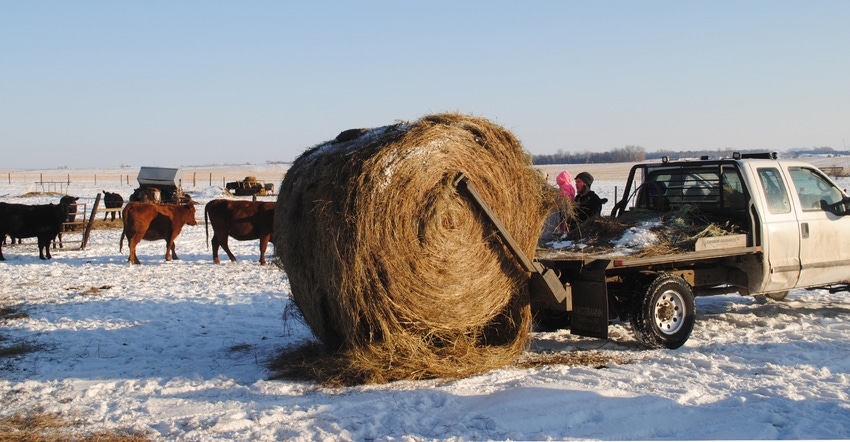Ways to save fed hay
Producers can look at several methods to conserve fed hay during the winter.
December 16, 2020

Making, transporting and feeding hay is a large investment in time, equipment and money. How can you reduce loss of hay during feeding to make that investment go further?
Each feeding method affects waste differently. If hay is fed unrestricted, cattle can waste 45% of the hay they are provided. Limiting feeding hay — so only what is required is fed — will significantly reduce waste.
Studies show that cattle fed daily versus fed every four days needed 25% less hay. That’s a huge amount, but labor and equipment costs increased slightly. A common and usually labor-efficient method of feeding is to feed hay directly on the ground by unrolling bales, distributing ground hay or loose hay, and bale-pod grazing. With any of these methods, there should only be enough feed distributed or available for one day.
Bale-pod grazing, where bales are spread out across a field or pasture and temporary fence is used to confine animal access to one bale, might be another consideration. When it’s time for more hay, the producer moves a fence instead of moving a bale. Limiting access by these physical barriers — such as fences, bale rings, racks and feed bunks — can all decrease waste.
These methods work by reducing trampling and the animals' ability to lay down on the hay. The most effective physical barriers have solid side bottoms. This prevents the hay from being pulled out on the ground.
While these methods are effective, they require the purchase of additional equipment, and may add time and money spent for large herds or frequent moves of the feeding location. No matter the method, reducing fed hay loss will increase the return on the hay investment.
Schick is an assistant Nebraska Extension educator.
Source: UNL Forage Minute, which is solely responsible for the information provided and is wholly owned by the source. Informa Business Media and all its subsidiaries are not responsible for any of the content contained in this information asset.
You May Also Like



